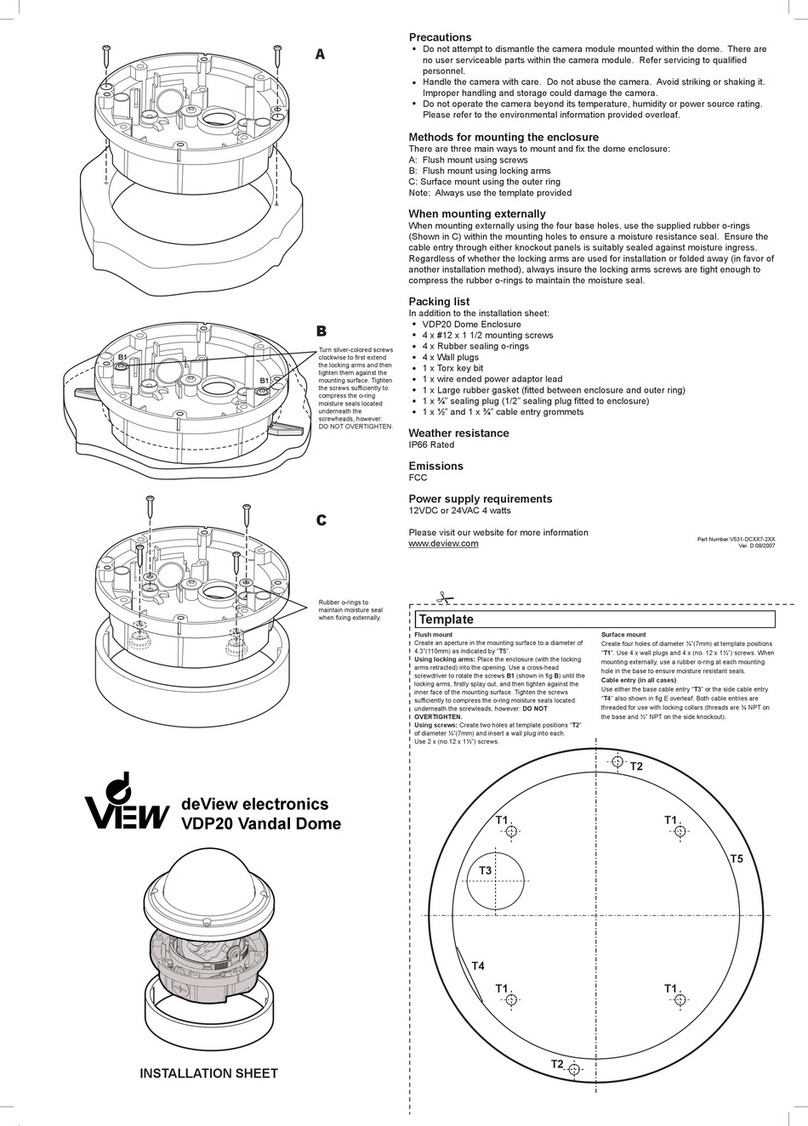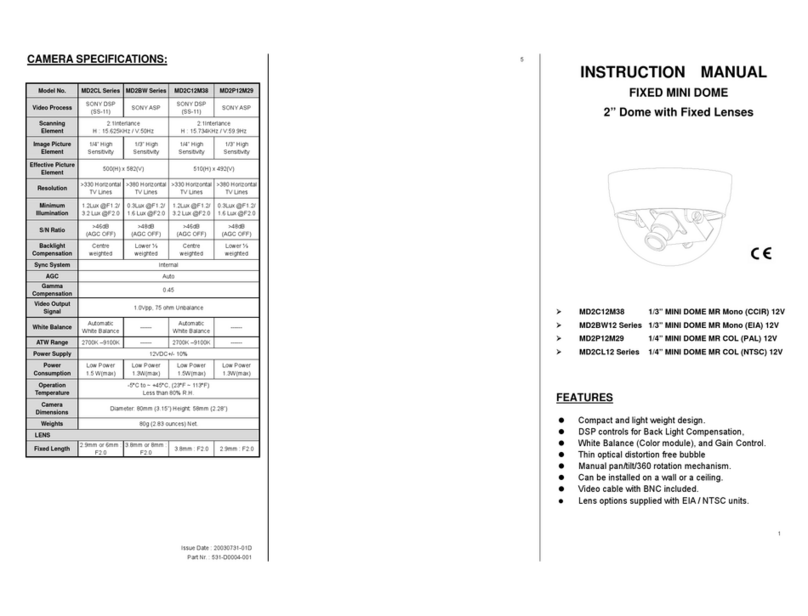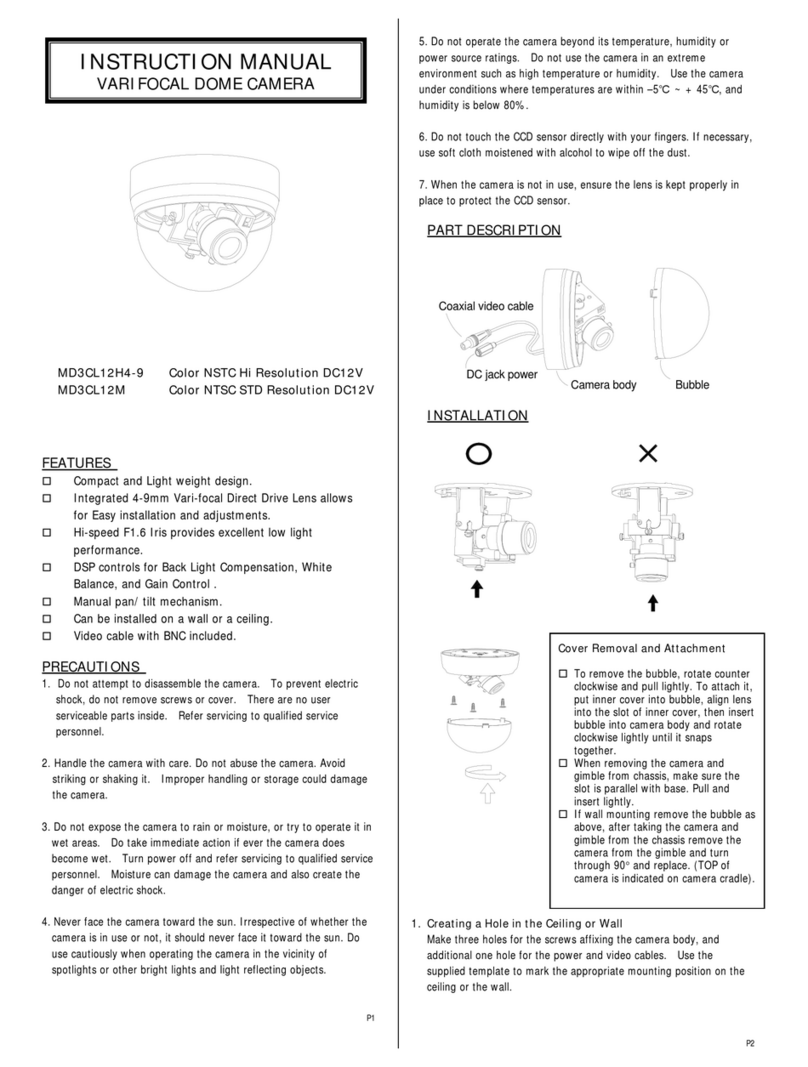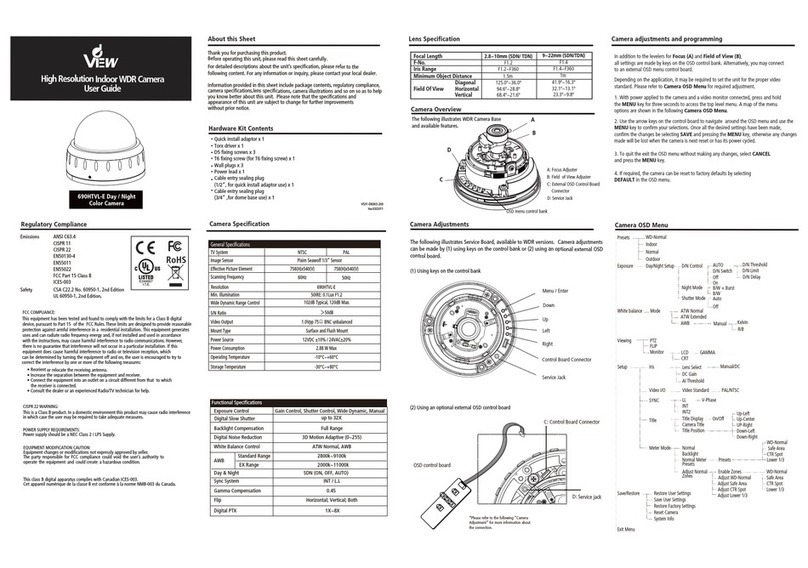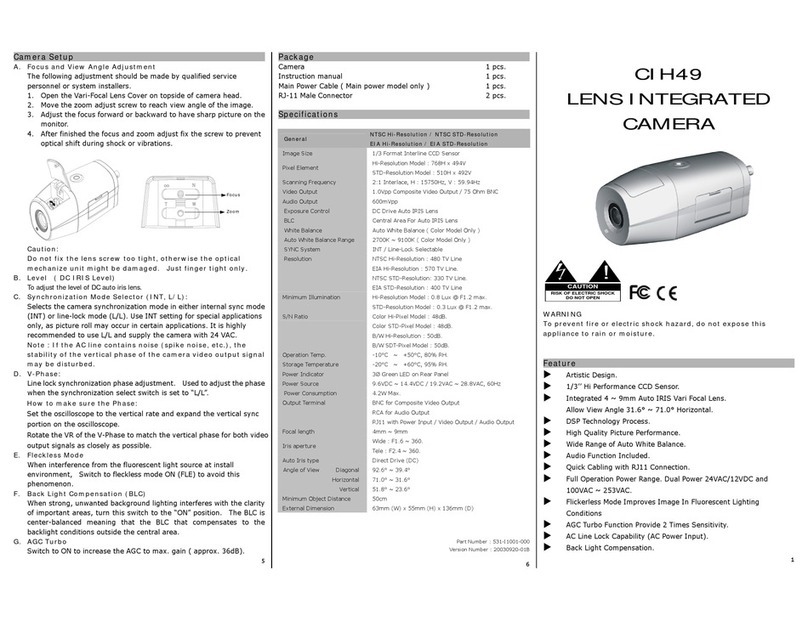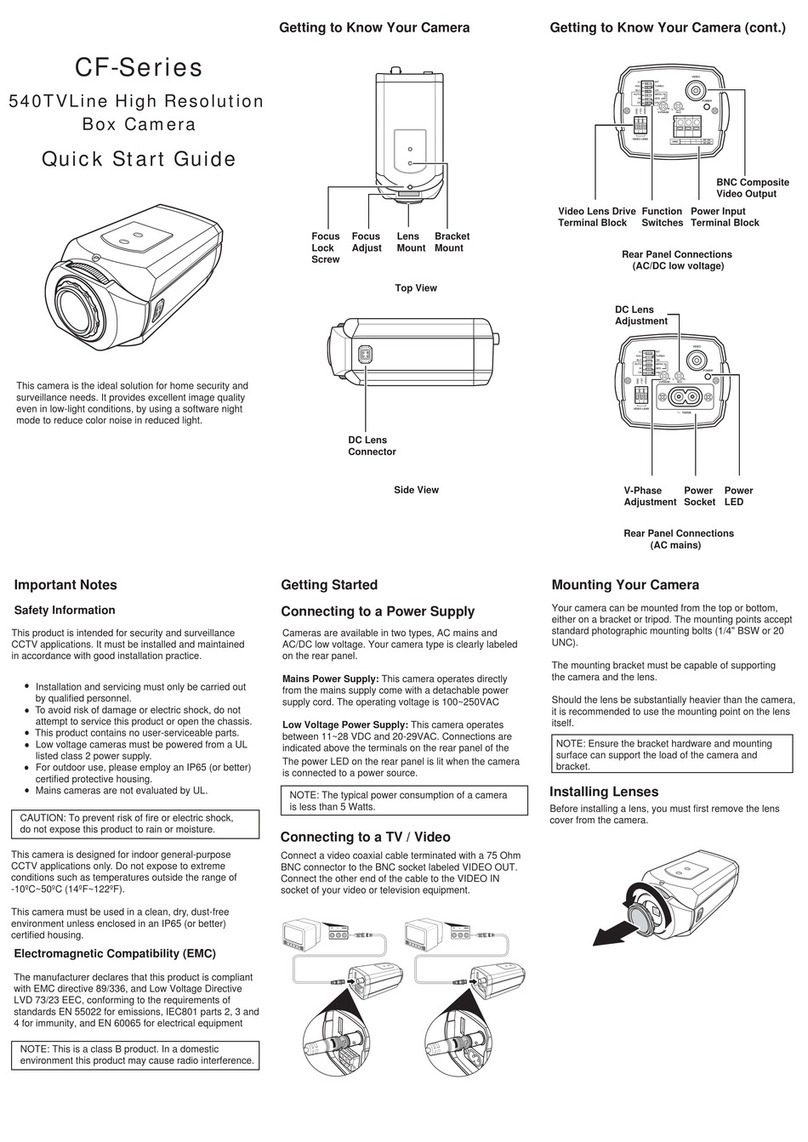
Auto / Manual Lens Type Selection ( Not available for Wide Dynamic Camera )
When set to AUTO the camera will automatically detect which type of lens is attached and configure itself
accordingly. Plugging a DC lens into the side connector will enable DD lens drive. Connecting a Video Iris lens to the
connector on the rear will select Video Iris drive. No connection will default to AES mode.
AUTO is the default setting.
WD ON / Off
AI / AES Mode Selection
This switch operates when Auto / Man is set to MAN mode. Setting to AES forces Electronic Iris mode,
compensates for excessive light levels by automatically adjusting the shutter speed of the camera.
AI will force DD or Video Iris mode, depending which type of lens is connected.
CK / ON
Chroma Killer. When set to on and AGC is in TURBO mode, chroma information is suppressed within the image in
low light. The resulting monochrome image produces a higher resolution image by removing chroma noise
contained in the image. This also permits more efficient recording with a DVR.
LINE LOCK PHASE ADJUSTMENT POTENTIOMETER
When the camera is in line-lock mode it is possible to adjust the point on the AC cycle at which the camera triggers.
This facility is provided so that cameras that are connected to different mains phases may still be synchronized.
The line lock phase adjustment potentiometer allows the line lock phase trigger point to be adjusted by :1:120°.
Rotating the potentiometer clockwise advances the trigger point and turning it anticlockwise retards the trigger
point. The factory default setting is the zero crossing point. If all cameras in a system are on the same mains phase
then no line lock phase adjustment should be made-see also Synchronization Selection (LL/INT).
ALC LEVEL ADJUSTMENT POTENTIOMETER
The DD lens level is controlled by this potentiometer. The video output signal is converted into a DC voltage by
circuitry within the camera. The potentiometer sets a reference voltage against which this derived DC voltage is
compared. If the DC voltage is less than the reference level, the lens iris opening is increased. If the DC voltage is
greater than the reference level, the lens iris opening is decreased. This control loop attempts to continually match
the DC voltage derived from the video signal, to the reference voltage set by the potentiometer. This feature allows
the installer to set the required video output amplitude (e.g. 1Vpp) that the lens should strive to maintain.
7
